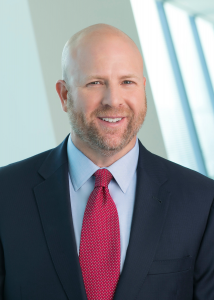 We spoke to Doug Noland, Executive Director, Patient Partnerships at Astellas Pharma, about the company’s view of patient engagement as an essential element of medicines development
We spoke to Doug Noland, Executive Director, Patient Partnerships at Astellas Pharma, about the company’s view of patient engagement as an essential element of medicines development
Tell us about Astellas’ key patient engagement activities?
Astellas is focused on building long-term relationships with patients and caregivers. Over the past two years, this has included implementing the right organization and operational infrastructure and executing a number of patient-centered pilots that gave us significant insights from patients to help us to better address their specific needs.
How has this translated into results?
Patient engagement is core to what we do, and within the last year, we brought on Dr. Anthony Yanni as head of the patient-centricity to lead the creation of a fully functional global patient-centricity organization. Our new structure and processes are based on the belief that patient engagement has to be a global effort, not just focused on specific regions, as we need to incorporate the voices of all patient populations. Astellas recognizes that this is a long-term goal and is committed to bringing a patient-centered approach to throughout the lifecycle of healthcare innovation – from discovery to development to commercial delivery.
How does PFMD membership help advance your PE initiatives?
Astellas is excited to join PFMD for many reasons, particularly the knowledge-sharing opportunities; the recently developed COVID-19 resource hub is a great example of this. Longer-term, we are looking forward to capitalizing on the collective knowledge of our peers who are also focused on integrating the patient voice into their work and sharing our experiences and learnings in patient engagement. In addition, Dr. Anthony Yanni, Astellas’ global head of patient centricity, was recently named to the PFMD board, which should provide plenty of opportunities for collaboration and creating a strong partnership with PFMD and its members.
What are your plans for patient engagement in 2020 and beyond?
Astellas’ 2020 patient engagement plans include continuing to focus on developing the broader global infrastructure of our patient-centricity division. My team focuses specifically on patient partnerships, which create more engagement opportunities. We are building a global team to connect advocacy groups and patients around the world with an authentic platform so we can deepen our learnings of their experiences. This feedback will help us better understand what matters to them and to help inform our decisions.
What is your key message to other stakeholders about the value of patient experience?
It is important for stakeholders to understand that patient experience is so much more than a “warm and fuzzy exercise.” There’s real tangible value to incorporating the patient perspective into our new medicine development – they allow us to make lasting changes and create medicines that really matter to our patients.

































































